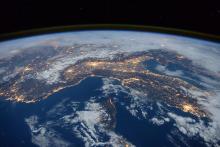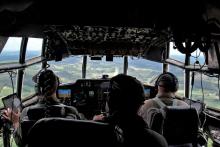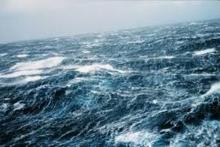A new podcast that highlights the work of Penn State researchers and how their findings impact communities near and far is now available through central Pennsylvania’s public media station.
Chris House, professor of geosciences at Penn State, will share several origin of life and space science research discoveries and their societal impacts at the next EarthTalks seminar at 4 p.m. Monday, Feb. 10, in 112 Walker Building at University Park.
Iron micrometeorites found in ancient soils suggest carbon dioxide made up 25 to 50 percent of Earth’s atmosphere 2.7 billion years ago, and that pressure at sea level may have been lower than today, Penn State researchers said.
In her final days as president of the American Meteorological Society (AMS), Penn State severe weather expert Jenni Evans addressed more than 5,500 of the society’s members, reflecting on 100 years of advances in the field.
Approximately twice as much methane is seeping into the atmosphere than the Environmental Protection Agency estimates from oil and gas facilities in the south central U.S., according to a series of measurements taken by meteorologists using NASA aircraft.
Jim Kasting, Evan Pugh University Professor of Geosciences at Penn State, will discuss the science and societal impacts of human-caused global warming and solutions to curb carbon dioxide emissions, at the EarthTalks seminar at 4 p.m. Monday, Feb. 3, in 112 Walker Building.
Climate expert Michael Mann was honored for his book “The Tantrum that Saved the World," by the American Meteorological Society.
The spring 2020 EarthTalks series, "Societal Problems, EESI Science towards Solutions," features scientists from Penn State’s Earth and Environmental Systems Institute (EESI) and explores the human impacts on the global environment and how to apply this knowledge to decision-making.
The Atlantic Multidecadal Oscillation (AMO) and the Pacific Decadal Oscillation (PDO) do not appear to exist, according to a team of meteorologists who believe this has implications for both the validity of previous studies attributing past trends to these hypothetical natural oscillations and for the prospects of decade-scale climate predictability.











